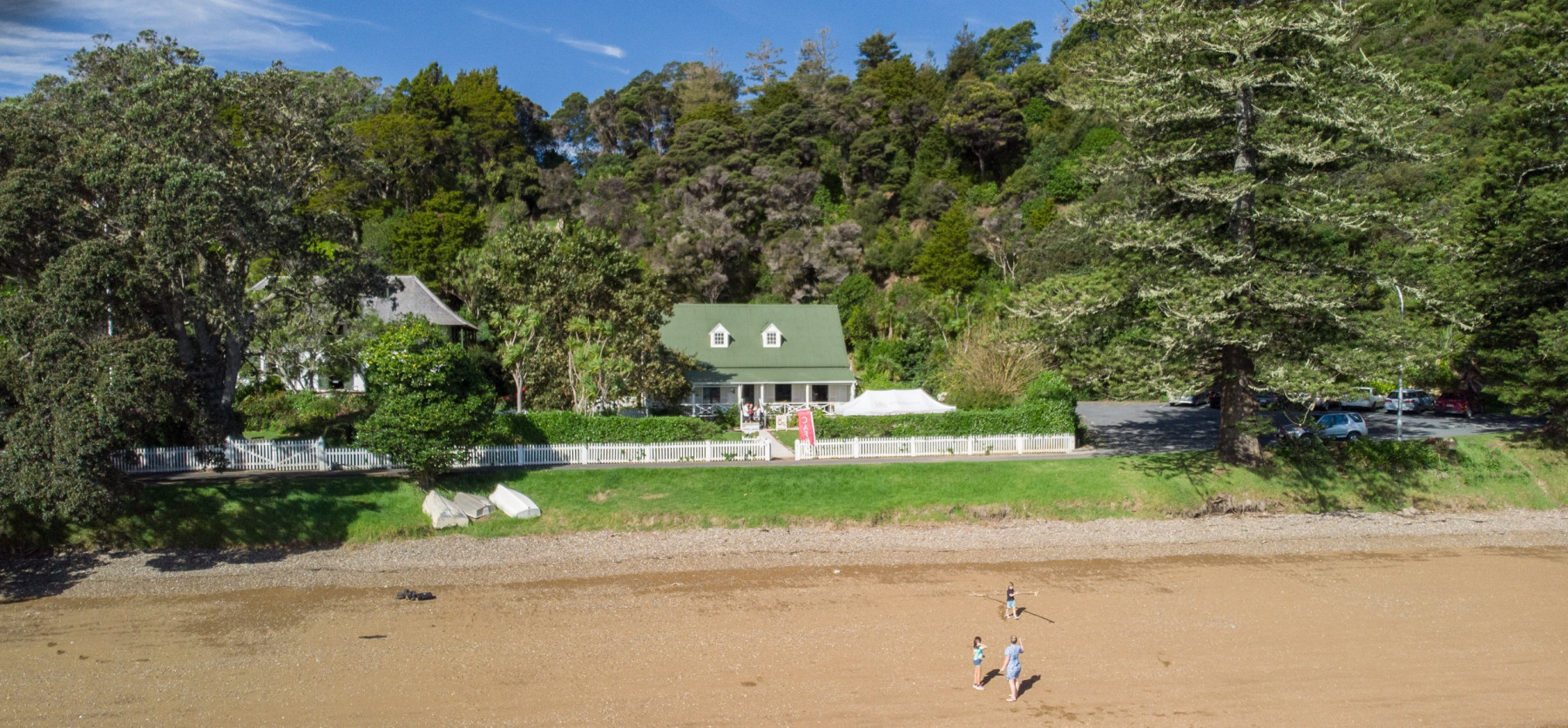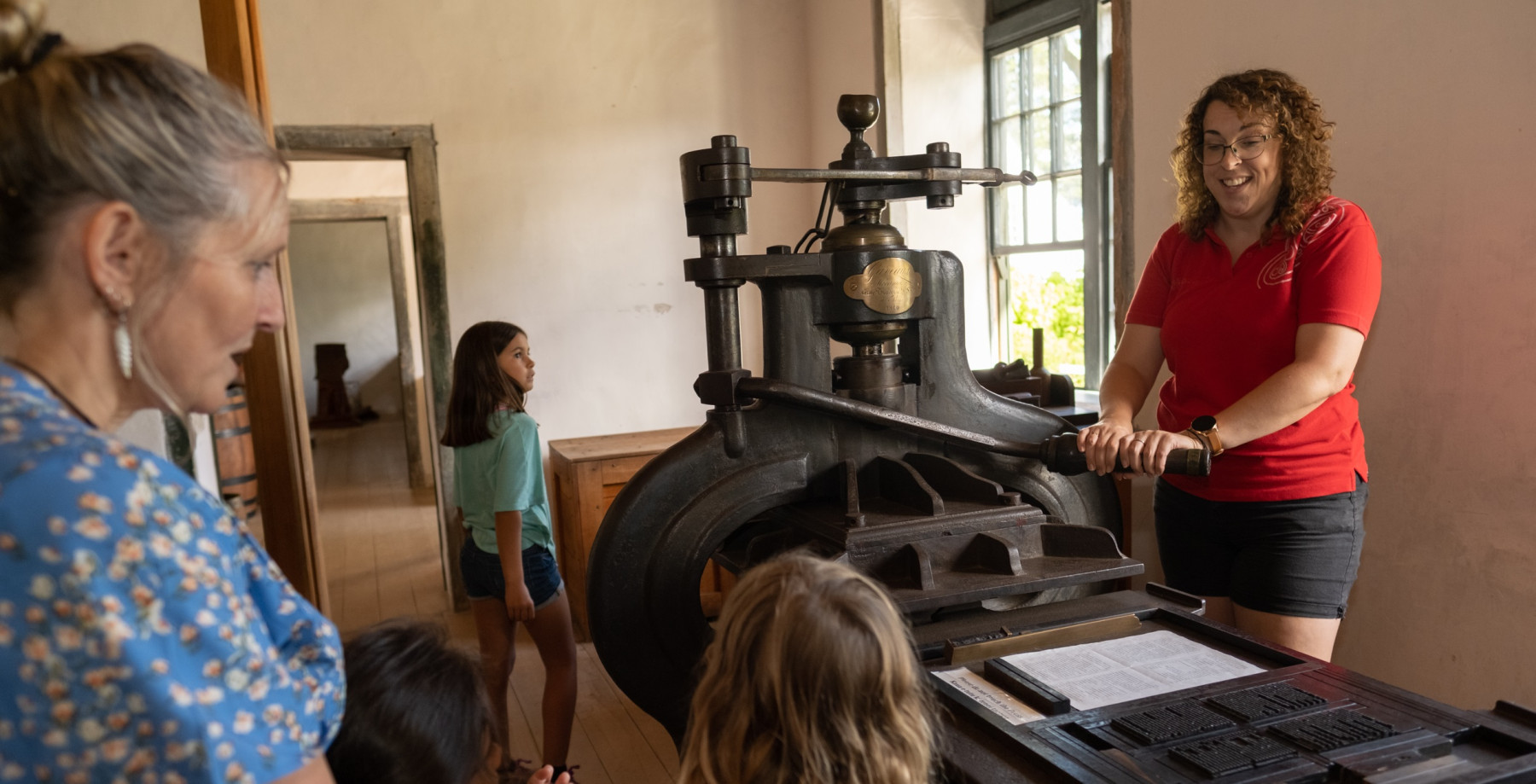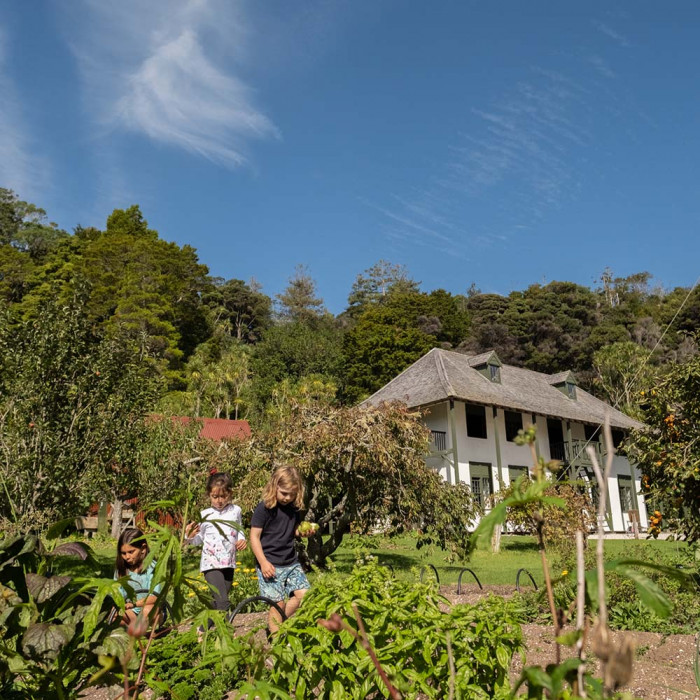An Introduction to Pompallier Mission and Printery
From 1842, Pompallier Mission and Printery in Kororāreka/Russell was the hub of the Catholic mission in the country, its ground-floor printery producing prayer books in te reo Māori (Māori language) by the thousands. An impressive feat, and first of its kind. Nearly 40,000 books were produced, and literacy developed fast.
As you stroll along the waterfront towards the mission, the first thing that might strike you about this place is the distinctly Gallic quality of the building. Among Russell’s colonial-era cottages and hotels, Pompallier Mission and Printery stands out. It was constructed in traditional Lyonnaise style using pisé de terre (rammed earth – originally a Roman building technique) for the lower level and pan de bois (timber framing) and earth panels upstairs, topped with a graceful hipped roof broken by dormer windows.

Photo: Heritage New Zealand Pouhere Taonga
Visitors to Pompallier Mission and Printery often remark on its sense of meditative calm. Partly that’s down to the austere interior of lime-plastered walls and dark timber floors, the latter as scarred and stained as you’d expect of an early industrial building. But it wasn’t always so stripped back. The Greenway family, who bought the property in the 1870s, transformed it into a grand Victorian dwelling, seeding the long-running myth that it had once been a Bishop’s palace. In the 1990s, the building was restored to its original spartan self, as authentic a restoration as you’ll find – it really does feel as if the Marist brothers are still in residence.
Visiting this unique French foothold in the Bay of Islands, you’ll see the mission’s restored printing press in action. You’ll get an insight into the founding of the Catholic church in Aotearoa and the mana (prestige/authority) Pompallier held in the community, with Māori and Pākehā alike. Finish your visit with French pastries and a promenade of the mission’s heritage-listed garden.
The guides who will show you Pompallier are locals passionate about the site and Russell’s history. Depending on the time of year, you’ll be able to work through the tanning process in the printery, from de-hairing the hides to softening the leather with the original hand-held tools, and learn how the brothers printed and bound their books. If you’re lucky, you may be able to make a print of your own using the French Common Press.
A tour of the gorgeous garden is also recommended. It was lay owner Hamlyn Greenway’s sister Jane Mair who set the tone for Pompallier Mission and Printery’s free-flowing grounds, all bright borders, fragrant hedges and casual plantings. Her orchard of plums, quince and other trees is still producing, as is the kitchen garden. Follow the trail up the wooded hillside behind the Mission and Printery for terrific views across to Paihia and Waitangi.

Photo: Heritage New Zealand Pouhere Taonga
Have we mentioned that the property is close to the water? On a fine summer day, it’s a great spot to kick back, perhaps relax in a bean bag on the lawn or dust off your French while playing a few games of petanque. Make sure you check out the French Coffee House for pastries and a cup of coffee, from local roasters Tohorā Coffee Co. Spend some time, too, in the excellent gift shop, which sells leather goods, homewares, gardening products and other items that are linked to the site.
From Pompallier Mission and Printery, it’s a short walk to Aotearoa New Zealand’s oldest surviving church. Built in 1835, Christ Church was a critical site during the Battle of Kororāreka ten years later – look hard and you’ll see the bullet holes. The cemetery is fascinating, and includes a memorial to six crew of the Hazard killed in a nearby skirmish, as well as the grave of high-ranking Northland chief Tāmati Wāka Nene and Hannah King, the first Pākehā female born in Aotearoa New Zealand.
Head on up the Flagstaff Hill Loop Track to the top of Te Maiki/Flagstaff Hill, where rangatira (chief) Hōne Heke felled the flagpole as an expression of mana. As well as being a compelling historical site, the route up Te Maiki has a sweeping view of the Bay of Islands and makes for a good workout.

